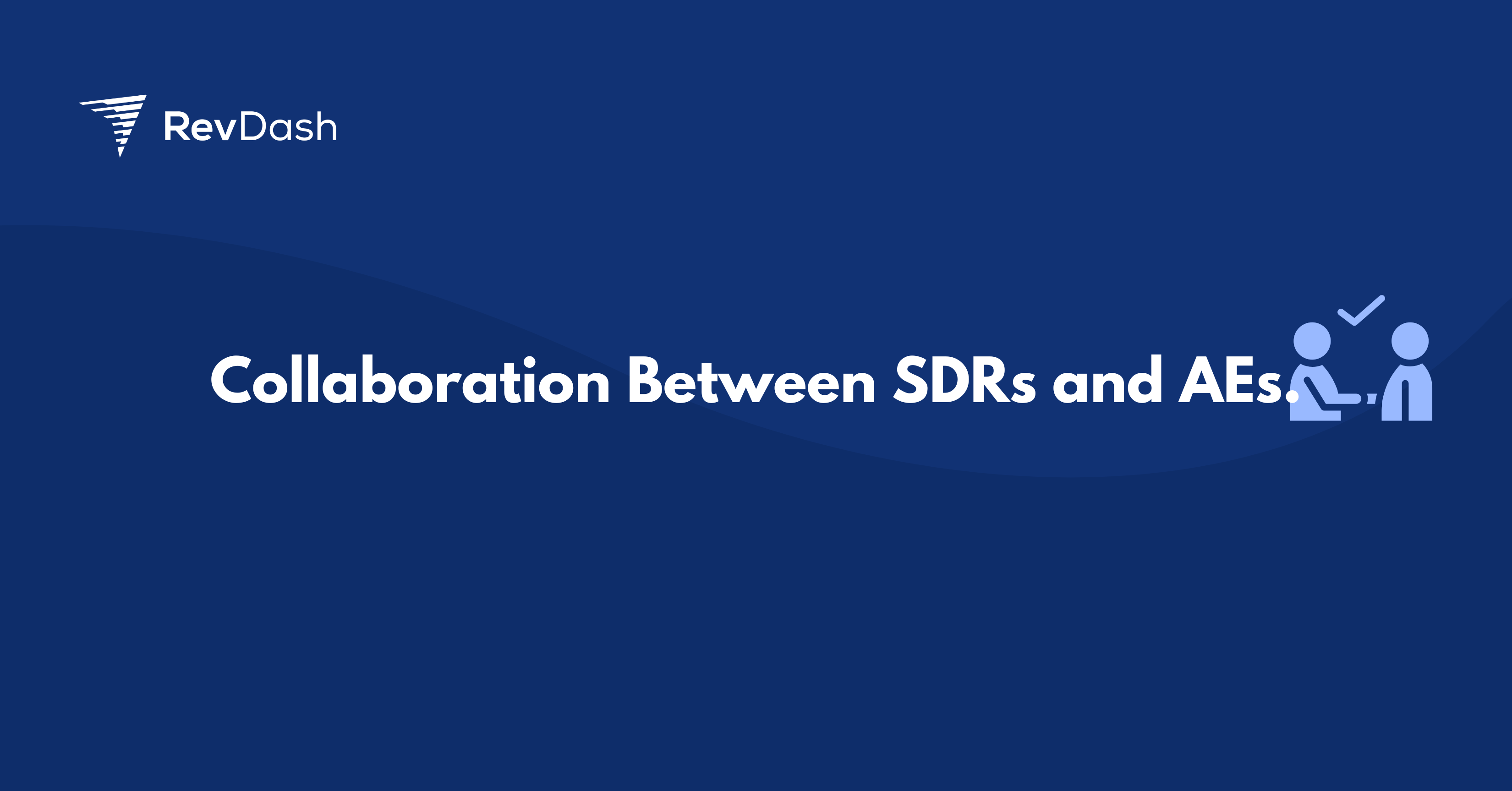The synergy between Sales Development Representatives (SDRs) and Account Executives (AEs) can be one of the keys to successful business deals. The relationship between these two roles is foundational, as each one relies on the other to nurture and close sales opportunities.
To optimize the collaboration between SDRs and AEs, certain strategies have been proven effective. Establishing clear lines of communication ensures that AEs are receiving well-qualified leads, while SDRs are informed about the needs and preferences of prospects. This interdependency creates a feedback loop that can enhance the performance of both parties.
A set of best practices allows SDRs and AEs to work as a coordinated unit, elevating the entire sales process. By aligning goals, sharing insights, and utilizing strengths, the partnership between these roles can flourish. This in turn leads to increased efficiency, higher conversion rates, and a stronger rapport with potential clients. The harmonized efforts of SDRs and AEs are not just about achieving immediate sales goals, but also about fostering long-term customer relationships that benefit the company’s growth.
The Role of SDRs and Account Executives
Sales Development Representatives (SDRs) and Account Executives (AEs) have distinct yet interdependent roles in the sales process of a company.
Defining Responsibilities
SDRs are primarily responsible for the initial stages of the sales cycle. This includes:
- Identifying and qualifying leads
- Outreaching prospects via calls, emails, or social media
- Booking meetings or demos for AEs
Account Executives handle the later stages, focusing on:
- Conducting meetings and demonstrations
- Navigating the sales cycle through negotiation and closing
- Managing accounts post-sale for upselling or cross-selling opportunities
Setting Shared Goals
SDRs and AEs benefit from establishing shared goals, such as:
- Monthly or quarterly sales targets
- Pipeline generation objectives
These shared goals ensure alignment in efforts and a seamless transition of responsibilities from SDRs to AEs. Clear communication channels are a must for these goals to be effectively met and to facilitate real-time updates on prospect status.
Communication Strategies
Effective communication between Sales Development Representatives (SDRs) and Account Executives (AEs) is the cornerstone of successful collaboration. Ensuring that both parties are aligned on goals, customer insights, and strategies enables stronger performance and outcomes.
Regular Meetings
Objective: Establish a consistent meeting schedule.
- Weekly Syncs: SDRs and AEs should hold weekly meetings to review progress, discuss new leads, and align action items for the following week.
- Monthly Reviews: A deeper dive into the month’s successes and challenges should be conducted to inform strategy adjustments.
Effective Information Exchange
Goal: Create a structured system for sharing information.
- CRM Utilization: Utilize the Customer Relationship Management (CRM) system to document all customer interactions, ensuring that both SDRs and AEs have access to up-to-date information.
- Shared Documents: Maintain a shared repository of documents for resources such as case studies, product updates, and customer feedback that both roles can reference and contribute to.
Conflict Resolution
Approach: Implement a clear process for handling disagreements.
- Resolution Protocol: Establish a step-by-step protocol that includes identifying the issue, each party’s perspectives, potential solutions, and a mutual decision-making process.
- Mediation: When necessary, involve a neutral third party to facilitate the resolution of more significant conflicts, aiming to maintain a positive working relationship.
Lead Qualification and Handoff
Effective collaboration between Sales Development Representatives (SDRs) and Account Executives relies heavily on proficient lead qualification and a structured handoff process. These steps are critical to ensure that valuable leads are nurtured and converted efficiently.
Smooth Transition Protocols
Transition protocols are detailed strategies that SDRs and Account Executives use to transfer lead information seamlessly. They should include:
- Detailed notes: Include SDRs’ insights and summaries of interactions with the lead.
- Clear timelines: Explain when the handoff took place and any upcoming milestones.
- Follow-up plans: Describe the steps the Account Executive should take post-handoff.
For instance, a transition checklist might include:
- Brief lead history: Italics for indication of personalization importance.
- Suggested next steps.
- Calendar of prior and upcoming engagement dates.
- Past communication records and preferences.
Adherence to such protocols ensures no information is lost, and leads remain engaged throughout the transition from SDR to Account Executive.
Aligning Sales Efforts
In a successful sales operation, Sales Development Representatives (SDRs) and Account Executives (AEs) must align their efforts to efficiently convert leads into customers. This section explores two fundamental aspects of this alignment.
Unified Approach to Targets
Clear Goal Setting: SDRs and AEs must have clearly defined and mutually agreed-upon targets. This means setting specific, measurable objectives that both parties can work towards.
- Establish shared sales quotas.
- Define ideal customer profiles collaboratively.
Consistent Messaging: To maintain a seamless transition from prospecting to closing, both teams should align on communication strategies and value propositions.
- Standardize sales scripts and email templates.
- Coordinate on the USPs (Unique Selling Propositions) presented to prospects.
Cross-functional Teamwork
Regular Communication: SDRs and AEs should hold regular meetings to ensure they are on the same page and to discuss strategies for target accounts.
- Weekly alignment meetings.
- Real-time communication channels for quick updates.
Shared Tools and Resources: Utilizing common CRM and sales engagement platforms can enhance the collaboration between SDRs and AEs.
- Integration of CRM systems for visibility on lead status.
- Shared access to knowledge bases and content libraries.
Performance Tracking and Analysis
Effective collaboration between Sales Development Representatives (SDRs) and Account Executives hinges on the continuous assessment of relevant performance data. This evaluation enables teams to refine strategies for improved sales outcomes.
Key Performance Indicators
Key Performance Indicators (KPIs) illuminate the effectiveness of the collaborative efforts between SDRs and Account Executives. Typical KPIs include:
- Lead Response Time: Quicker responses can increase the chance of progressing a lead through the sales pipeline.
- Conversion Rate: The percentage of leads that turn into opportunities indicates alignment quality.
- Sales Cycle Length: Determines the average time taken to close a deal, highlighting efficiency in moving leads through the pipeline.
Analyzing these KPIs allows for data-driven insights, enabling teams to adapt and enhance their cooperative approaches.
Feedback Loops and Improvement
Continuous improvement relies on a structured feedback loop where both SDRs and Account Executives regularly:
- Share insights on lead quality and customer interactions.
- Assess the clarity of communication regarding responsibilities and outcomes.
- Address challenges in the collaboration process, identifying areas for further training or strategy adjustments.
This process ensures that both parties remain informed about their performance and fosters a culture of mutual growth and accountability. Regular analysis and feedback are essential to adapting strategies and achieving sustained success.
Training and Development
Effective collaboration between Sales Development Representatives (SDRs) and Account Executives (AEs) hinges on well-structured training and development programs. These programs ensure that both parties possess the necessary skills and knowledge to successfully navigate the sales process together.
Continuous Training Programs
Frequency: Regular training sessions are vital. They should be scheduled weekly or monthly to keep both SDRs and AEs abreast of best practices.
Content: Training curricula must cover:
- Product updates
- Sales techniques
- Customer relationship management (CRM) software tutorials
Format:
- In-Person Workshops: For interactive learning
- Webinars: For remote learning
- Online Courses: For self-paced learning
Tracking Progress:
- Metrics Used: Track completion rates and quiz scores
- Feedback Loops: Implement surveys for trainees to provide insights on the training effectiveness
Skill Enhancement Techniques
Role-Playing: To improve negotiation and communication skills, frequent role-playing exercises are recommended.
Mentorship Programs:
- Structuring: Pair less experienced SDRs with veteran AEs
- Objective: To facilitate knowledge transfer and foster a culture of continuous improvement
Sales Drills:
- Scenarios: Tailor drills to mimic common sales scenarios to enhance problem-solving abilities
Tools and Resources:
- Access to Latest Sales Software: Provide tools for efficiency, like CRM or analytics platforms
- Extensive Libraries: Create repositories of sales materials for self-guided learning
Best Practices Recap
In this section, readers will find a distilled outline of the essential strategies for enhancing cooperation between Sales Development Representatives (SDRs) and Account Executives.
Summary of Key Takeaways
- Clear Communication Channels: Establish and maintain well-defined lines of communication between SDRs and Account Executives.
- Roles & Responsibilities: Delineate the roles and responsibilities of each team member to avoid overlap and ensure a unified approach.
- Lead Qualification Criteria: Both parties should agree on lead qualification criteria to enhance the quality of leads being passed on.
- Feedback Loops: Implement a systematic process for reciprocal feedback to continually refine the collaboration process.
- Regular Meetings: Schedule consistent meetings between SDRs and Account Executives to discuss progress, challenges, and strategy alignment.
- Shared Goals & Metrics: Developing shared objectives and measurable KPIs to track the collective success of the team is critical.
- Training & Development: Investment in mutual training sessions ensures both teams understand each other’s methods and challenges.
- Technology & Tools: Utilize CRM and communication tools that aid in seamless information exchange and real-time updates.
- Celebration of Success: Recognize and celebrate the successes achieved through collaborative efforts to bolster morale and further encourage teamwork.



